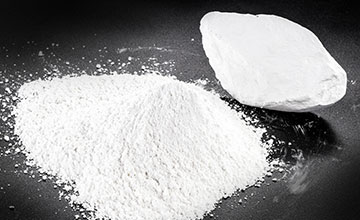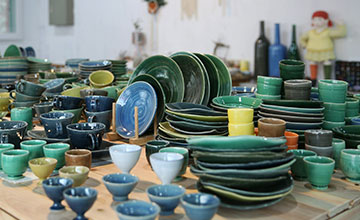Ceramic Raw Materials
Raw materials are the foundational substances used in the manufacturing process, often in their natural, unprocessed state. These materials are essential across all industries, forming the building blocks for products we use daily. In particular, the ceramic industry, where raw material choice and processing have a direct impact on product quality, durability, and performance, demonstrates the critical role these materials play.
What Are Raw Materials?
Raw materials are natural resources that are either extracted from the earth or produced by living organisms. They can be classified into various categories based on their source: organic (from living things), inorganic (from minerals), and synthetic (human-made). In manufacturing, raw materials undergo processing to become intermediate or finished goods.
Examples of common raw materials include wood, cotton, ores, and metals. The manufacturing process transforms these raw materials into finished products such as textiles, electronics, automobiles, and ceramics.
The journey of raw materials from extraction to finished product requires careful consideration of their properties and characteristics. In the ceramic industry, for instance, the choice of raw materials directly influences the texture, strength, colour, and durability of the final product. Understanding the function and composition of each material allows manufacturers to create ceramics that meet both functional and aesthetic requirements.
Raw Materials in the Ceramic Industry
The ceramic industry is heavily dependent on the quality and composition of its raw materials. Ceramics are non-metallic, inorganic materials that are shaped and fired at high temperatures to create products ranging from pottery and bricks to sanitary ware and tiles. The production of these items relies on several raw materials, each contributing specific properties to the final product. Some of the key materials include:
- Clay - Clay is a crucial component in ceramics, offering plasticity, which allows it to be moulded into various shapes. It serves as the base material in the production of most ceramic items, including tiles, porcelain, and pottery.
-
Kaolin –
Kaolin is a fine, white clay that contributes to the whiteness and smooth texture of ceramic products. It is particularly valued for its low iron content and ability to withstand high temperatures without deforming.

- Feldspar – soda and Potash Feldspar acts as a flux in ceramic production. It lowers the melting temperature of the other materials, allowing the ceramic to form a glassy phase that increases strength and reduces porosity.
- Quartz – Quartz, or silica, is another key ingredient in ceramics, helping to increase the mechanical strength and thermal stability of the product. It also improves the glaze and surface finish of ceramic tiles and products.
- Ceramic Stains – These are a special category of raw materials that provide colour to ceramics. Stains are typically metallic oxides that are blended with clay or applied as surface treatments to achieve a variety of hues and decorative effects.
Ceramic Tiles: A Blend of Traditional and Modern Materials
Ceramic tiles are one of the most popular and versatile applications of ceramics, used in both residential and commercial spaces for flooring, walls, and decorative elements. The production of ceramic tiles involves a combination of traditional raw materials like clay, kaolin, and quartz, as well as modern innovations like digital inks.
- Clay and kaolin form the structural base of ceramic tiles, providing moldability and strength. When fired at high temperatures, these materials become hard and durable, suitable for long-term use in homes, offices, and public spaces.
- Feldspar and quartz contribute to the thermal stability and surface finish of the tiles. Feldspar lowers the melting point of the materials, creating a glassy surface that improves water resistance and makes the tiles easier to clean.
-
Ceramic stains and digital inks enable manufacturers to create unique designs, colors, and textures on the tile surfaces. These materials are formulated to withstand the high firing temperatures involved in ceramic production without losing their vibrancy or integrity.

With advancements in raw material processing and the integration of digital technologies, the ceramic tile industry has evolved to offer a wide range of products that cater to diverse aesthetic and functional requirements.
Raw materials are the foundation of the ceramic industry, playing a critical role in determining the quality, appearance, and performance of ceramic products. The industry’s reliance on materials like clay, kaolin, feldspar, quartz, and ceramic stains highlights the importance of selecting and refining these substances to meet the specific demands of modern ceramic manufacturing.

